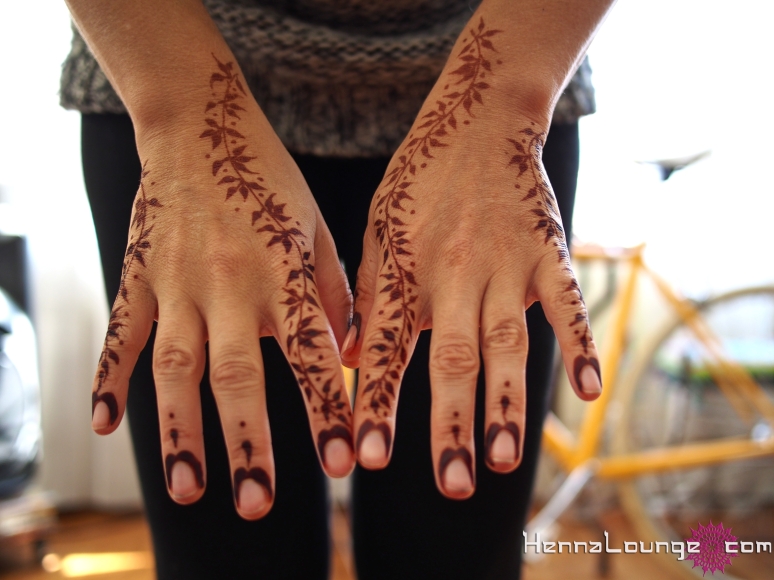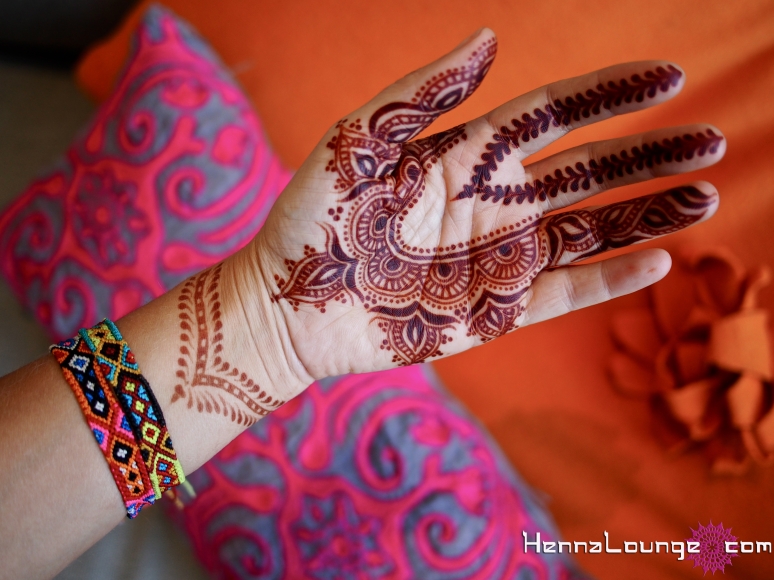Testing out some henna powders
For Christmas, I received a sample of Habiba Henna from the generous Tammi at Henna Bee. Of course a true henna-lover never misses the chance to test out a new henna powder. I love smelling it and mixing it! I decided to do a side by side test of the Habiba next to my 2012 Organic Rajasthani. Unfortunately, my test was not entirely perfect because it turned out the sample of Habiba was less than 100 grams, which I didn’t realize until after I mixed them both up. So the Habiba got a little more sugar and a little more essential oil than the my Raj. But it turns out it doesn’t really matter, and you’ll see why.
I mixed both hennas with room temperature distilled water, a tablespoon of white sugar, and 30ml of essential oil (half tea tree and half high-altitude Bulgarian lavender). Both hennas mixed up easily and once the liquid was absorbed, lumps were easily stirred out of both, no electric mixer needed.. The Habiba had a slightly coarser grind (but still BAQ fine and no twigs or foreign matter), and I would probably recommend bottle-users to strain the paste to get rid of any particles. The Organic Rajasthani had a finer grind, but was considerably “snottier”. Snotty paste is great for draping lines, but is an “advanced user” paste because beginners sometimes have a hard time knowing when to release pressure on the cone which can cause what I call “Hershey’s kisses”. Dye release was fast in both, and I coned them both up around the 4 hour point. In summer I imagine you could mix it up and use it within 1-2 hours if you wanted to.
I got ambitious and decided to do a both hands with the same design in order to get an accurate comparison of the color in both calloused and thin-skinned areas. So it’s not the best design ever, because it had to be an easy enough design to do left-handed. I sealed the designs with “lemon-sugar” and I left the Habiba on for 7.5 hours and the Raj for 6 hours. I was able to avoid water on the first day. I got a better than average stain on the top of my hands, with the fingertips reaching a very rich espresso and the thinner skinned area reaching a respectable chocolate brown.
Conclusion? The Habiba has a really great texture that is not too stringy (if you’re used to working with Jamila henna then you will appreciate this creaminess) and the Rajasthani is great for people who want an Organic product and prefer a stringier consistency for advanced techniques like draping lines. Both hennas gave a fantastic color and it’s going to be hard to go wrong with either of them! Sorry my hands look all dry and veiny! Henna Bee’s Habiba is available from the Henna Bee site in Canada/USA, and from Riffat in the UK, . And the 2012 crop of Organic Rajasthani is available here.







